Updated 2025
Planning a trip to Italy, envisioning Venice, Florence and Rome? Then put Bologna on your radar too because this dynamic Italian city not only oozes centuries of history, it’s a convenient transport hub for exploring the country and, quite surprisingly, away from the usual tourist rush. Start your holiday with 2 days in Bologna, the head for other iconic Italian cities or coastal resorts which are simple to reach by fast train.
If you want a totally Italian experience that includes World Heritage Sites, good food and wines, in a pocket-friendly environ, then head this way… for a budget weekend break or as the start, or finishing point, of a fabulous holiday in Italy.
Follow our footsteps to see the best things to do in Bologna. Whether you’re here for a one-night stopover or 2 full days, this walking itinerary will guide you along to the most extraordinary sights.
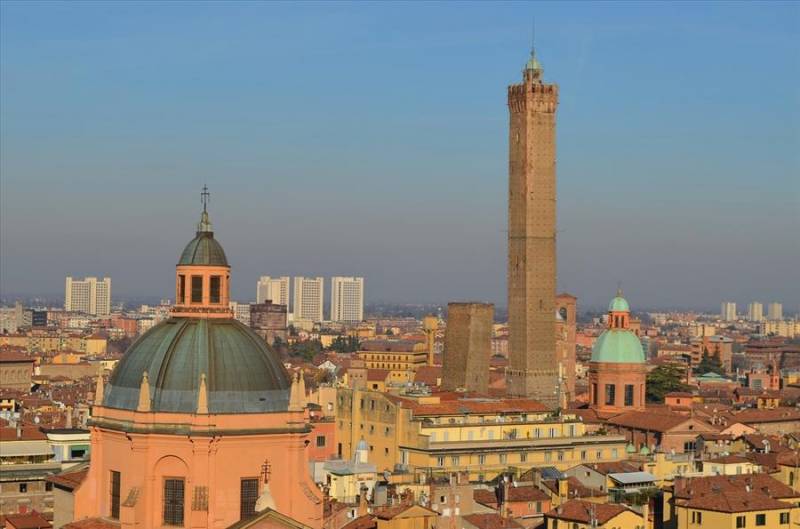
2 Days in Bologna, Italy
Why visit Bologna?
Well basically, the ‘old town’ centre of Bologna is historically enlightening with ancient city walls protecting gothic temples, medieval towers tilting crazily over terracotta rooftops, and home to the oldest university in the western world, it’s also a cool place for eating out and flight prices are enticing (from Europe they’re actually dirt cheap!).
Where is Bologna?
To put it on the map, Bologna is the capital of Emilia Romagna, a region in northeast Italy notably famous for Parma cheese and hams, Modena vinegar and the Lambrusco wine fields, as well as the trendy beaches of Rimini.
Two days is enough to see Bologna itself, 3 days if you fancy a more leisurely experience or want to pop off to see San Marino for a few hours (a tiny kingdom perched on a mountain beside the Adriatic Sea). A weekend is probably ideal, 48 hours of cultural fun and calorific cuisine!
Unlike crowd-drawing Florence and Rome which are packed with Italian day trippers on Saturdays and Sundays, you can dawdle along the streets of Bologna in unhurried bliss any day of the week.
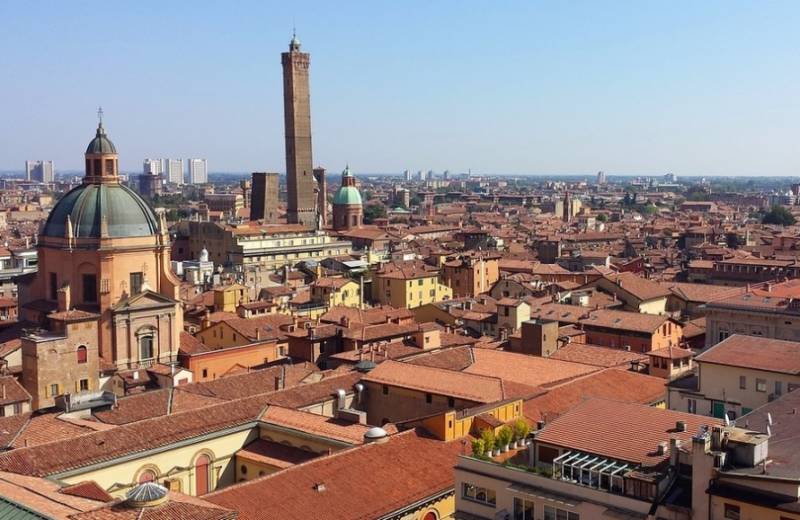
Brief History of Bologna
Although Bologna’s roots may go back as far as the Bronze Age, it was evidently the Etruscans, an Ancient Italian civilization who roamed these lands some 900 BC, who first developed the city; later ruled by the Celts, Bologna eventually became part of the great Roman Empire, the remnants of which are still visible today.
The Middle Ages left a magnificent inheritance of Catholic churches and cathedrals, apart from palaces and stately buildings faced with distinctive high-arched porticoes, and the university which was originally founded in 1088.
Prosperity continued until the area was decimated in World War II, a tragic period officially recognised by the ‘Sacrario’ memorial panels on the front of Palazzo d’Accursio, the City Hall (names and photos of the 2,059 Bolognese partisans who fell 1943-45). Fortunately, the city’s historical architectural legacy has been restored to form the characteristic cityscape you can see today.
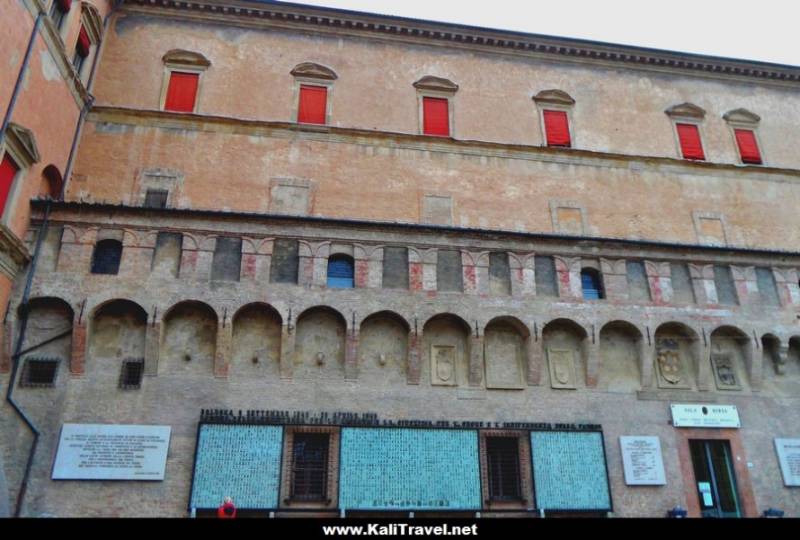
Bologna has one of the biggest historical centres in Europe, in fact it’s second in size after Genoa. A fortified city in Medieval times, part of the ancient walls, 10 original gateways and some 20 lookout towers still stand today – the inner streets are packed with a wealth of baroque, renaissance and medieval monuments, as well trendy stores, food markets and delis, and lots of restaurants!
As you’ll see, the old quarter is a vibrant district where Italians live, work and study, not an overt touristy attraction. Everything is quite compact and you can walk around easily to see the main sights in less than a day. However, there’s more to Bologna than historic sites, with some cool cultural things to do and see, fine parks to enjoy, and trails to tread in the surrounding hills, you might not want to come away!
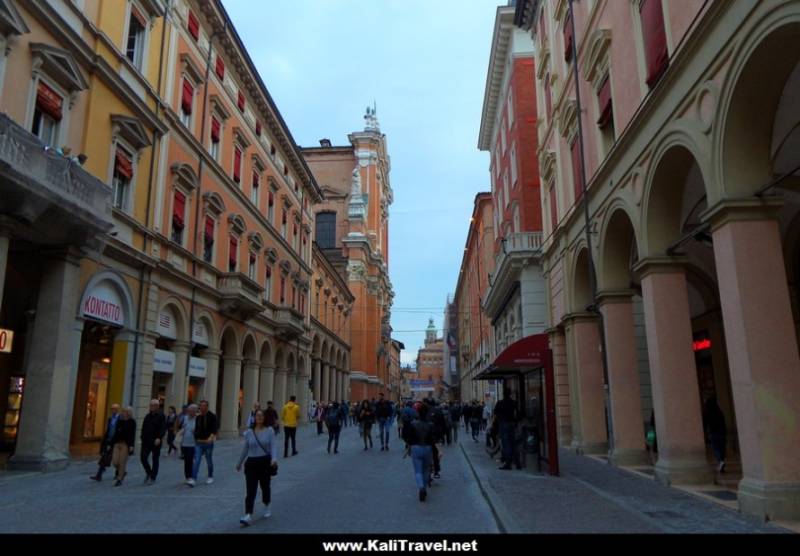
Where to stay in Bologna
On a one or 2-day visit to Bologna, it’s convenient to stay near the train station (Bologna Centrale) to save time and the pain of lugging baggage around. The old city is a 10 minute walk from here, through Parco della Montagnola park and into the back streets of the ‘Jewish Ghetto’, or under the colonnaded buildings that line the smart shop fronts down Via dell’Indipendenza straight towards Piazza Maggiore.
However, if you prefer something more atmospheric or classy, there are some lovely accommodations close to the illustrious main square.
“We arrived on the afternoon flight direct from our hometown in Spain, hopped on the shuttle bus to ‘Centrale’ railway station, caught the hourly fast train and were in Venice long before sunset on the first day of our 15 day Italy itinerary. The intriguing city of Bologna was waiting for us at the end of the trip.”
First Evening in Bologna
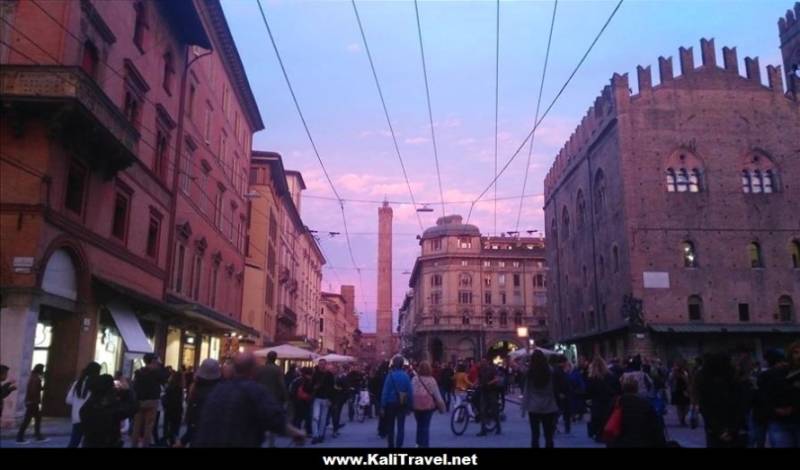
Stroll down to Piazza Maggiore in the heart of the historic quarter on a Friday evening for some street entertainment – there’s invariably a concert, outdoor theatre or some event going on. Not surprisingly, Bologna is a recognised ‘European City of Culture’ as well as a UNESCO ‘City of Music’.
Leave Maggiore square through the old city gate into the adjacent alleyways full of bistro bars, grab a table on a pavement terrace and order an Italian charcuterie board with a glass of Pignoletto or Sangiovesi wine. Bologna brings overlarge sausages to mind and lashings of beefy spaghetti sauce but ‘aperitivos’ are a fine art of slivered cured meats and gourmet cheese – local produce at its best.
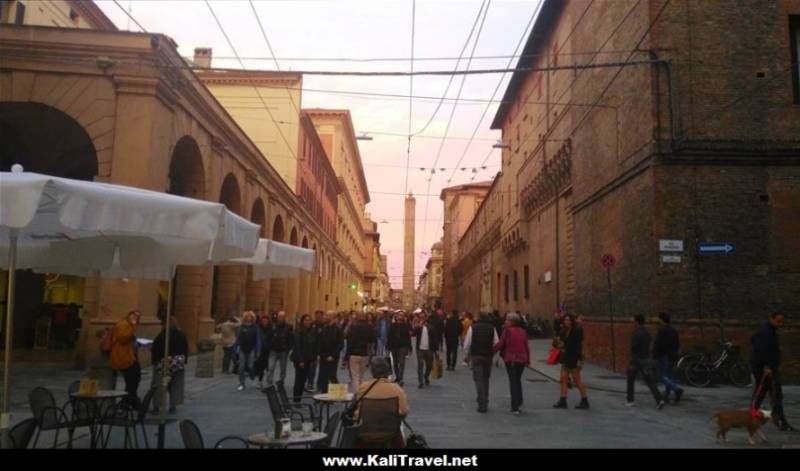
Prices are correct but if you’re eking out your budget, walk through the fashionable zone and just around the corner you’ll find places serving slabs of pizza straight from the oven with a glass of lager or Aperol spritz for 5 euros in all – not quite as glamorous but extremely tasty. Warning: you don’t really need dinner after this!
Day One in Bologna
Do you prefer a classic map or phone app to find your way around a new destination, or a properly organised time-saving and educational tour? Bologna is simple to see, roads laid out in a Roman grid-like way, many of them now pedestrianised, so with the help of one of those sightseeing pamphlets to pin point top attractions, we set off to explore the old city, everything within walking distance, no fear of getting lost.
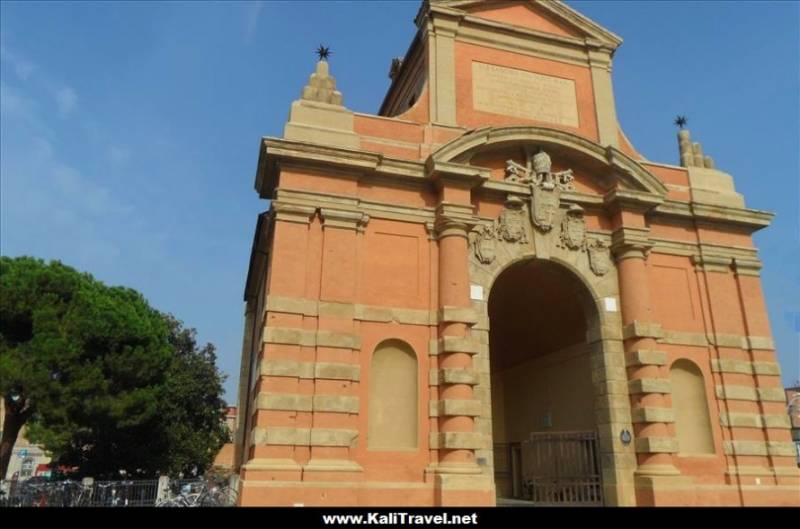
Parco della Montagola is across the main road from Bologna Centrale Station. Medieval Bologna was ringed by 3 defense walls, and although few sections remain, you can still see 10 of the old city gates – Porta Galliera was a main gateway through the ‘third circle’ outer wall, a giant stone archway rescued from the past which stands alone in Piazza XX Settembre (city square next to the main bus station).
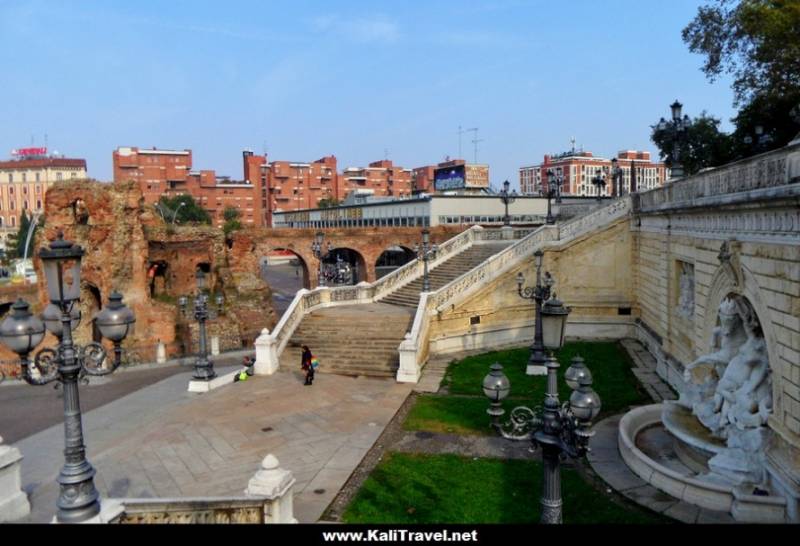
The ruins of Galliera Castle and a balustrade stairway lead up to Montagola City Park. Walk under the shady trees to Piazza VIII Agosto (street markets on Friday and Saturday mornings), and a few minutes south you’ll enter the historic districts of Bologna.
The Hidden Waterways of Bologna
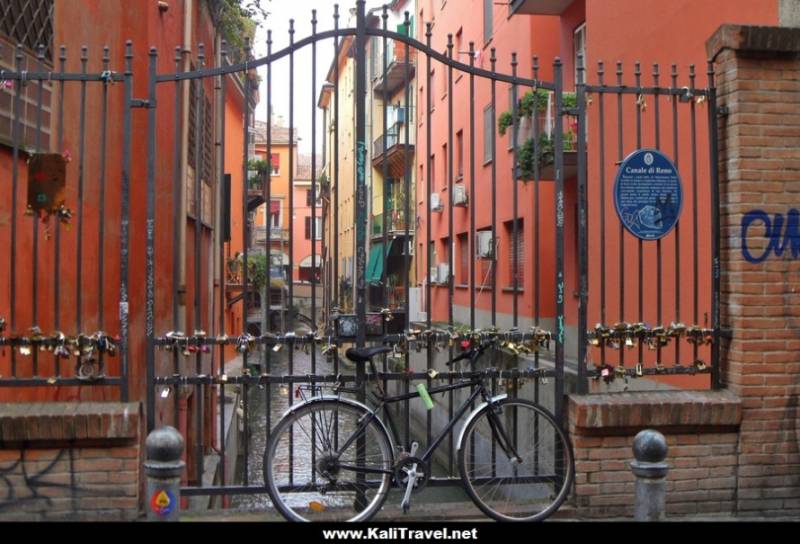
Did you know that Bologna is built over a system of ancient waterways? Buried beneath the city surface, these channels still run underground – created centuries ago for shipping silks from Bologna’s textile mills, the waterways were gradually covered up as the town developed over the ages and are actually quite challenging to find.
However, there’s a viewpoint in the back streets, a cute window in a wall ‘Finestrella di Via Piella’ which looks over Reno Canal, the ‘secret’ Canale delle Moline wedged between bright tenement buildings.
Porticoes and Towers of Bologna
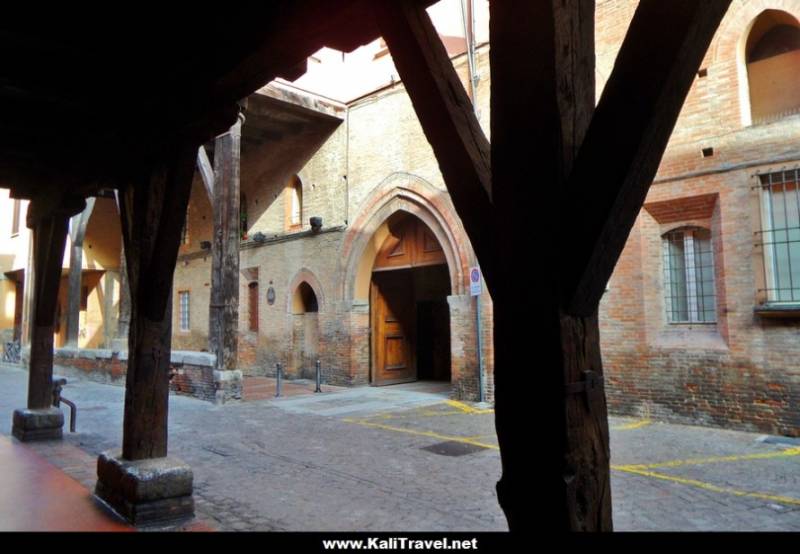
Palazzo Grassi is only a couple of minutes south of here on Via Marsala, a 13th century Gothic style palace where you can see the authentic wooden porticos as you walk by.
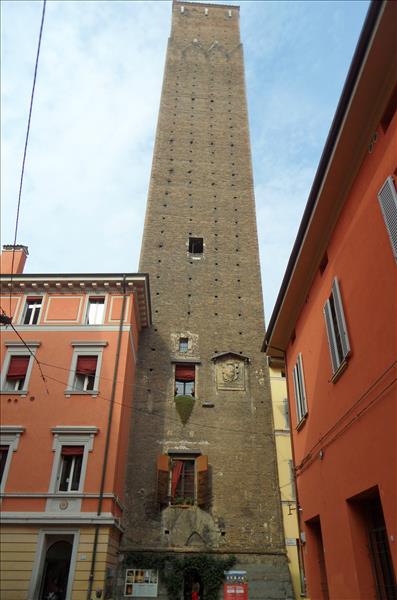
Torre Prendeparte is 2 minutes away (south) – the second highest tower in Bologna and, originally built in the 12th century as a watchtower, used as a seminary and later a jail, the 12-storey, red brick structure has been authentically reformed and refurbished, and is now a unique guesthouse where you can stay, as if you were back in the olden days but luxuriously so!
The Jewish Quarter is a labyrinth of ancient passageways reaching out to Bologna University District to the east. Soak up the atmosphere and get your photo fix uncovering the architectural wonders along the way, the ornate porticoes, merchant’s mansions and palazzi, and scholastic halls.
Places of cultural interest include the ‘Museo Ebraico’, Bologna Opera House, and San Giacomo Maggiore Basilica (14th century Roman Catholic Church with a collection of Renaissance Art). From here turn onto Via Zamboni and walk southwards for 2 or 3 minutes and you’ll see Bologna’s landmark twin towers.
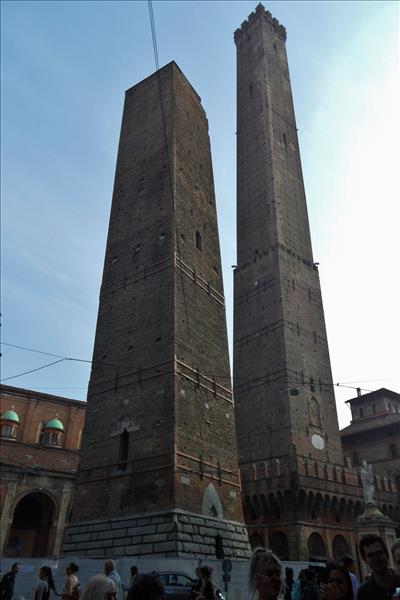
Le Due Torri, the leaning red brick towers of Bologna rise up on a busy junction in Plaza di Porta Ravegnana. Erected in the early 12th century and amazingly still standing, Asinelli Tower is the tallest at almost a 100 metres high and a visible off-centre tilt – for the price of an entrance ticket, it’s worth the climb to the top to take in the city view. Garisenda Tower is the lower of the two (47 m), currently being restored and not yet open to the public.
The ‘Merchant’s Court’ is an interesting Gothic building on the adjacent Piazza della Mercanzia (part of the Aemelian Way trading route, Bologna was an important city as far back as Roman times).
A couple of minutes on you’ll come to the Quadrilatero, Bologna’s historical food and trade market neighbourhood since the Middle Ages. Turn right and Piazza Maggiore is only 4 minutes away.
Quadrilatero of Bologna
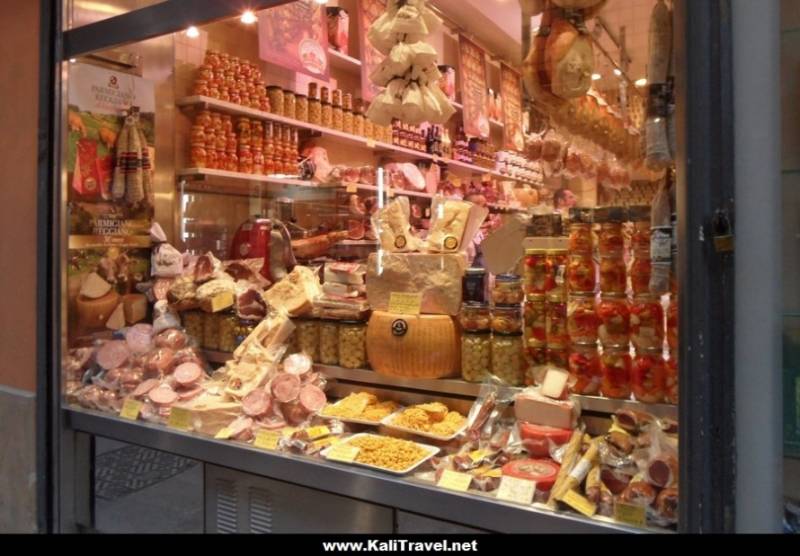
Quadrilatero is the place to eat – leave Piazza Maggiore through an archway into the maze of little streets where old-fashioned greengroceries and delicatessens vie for space with age-old ‘osterias’ and chic aperitivo bars.
Mercato di Mezzo, the famous indoor grocery market is set up in a 19th century pavilion on Via Clavature ‘locksmiths street’, the place to buy fresh produce or enjoy a Bolognese brunch at one of the food stalls. One of the most characterful neighbourhoods in the city, this was Bologna’s marketplace in medieval times and where the famous silkworm fair took place, amid the medley of higgledy-piggledy dwellings and stores!
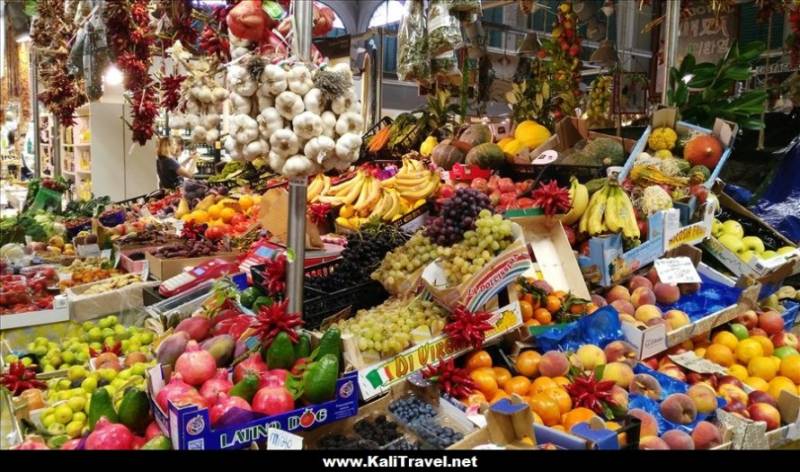
Santo Stefano District
As we mentioned, Piazza Maggiore is only a few steps away from here but it’s worth taking this detour into the heart of Santo Stefano quarter. South of Piazza della Mercanzia the road forks to Via Castiglione or Via Santo Stefano (or leave the Quadrilateral along Via Clavatureto Via Castiglione).
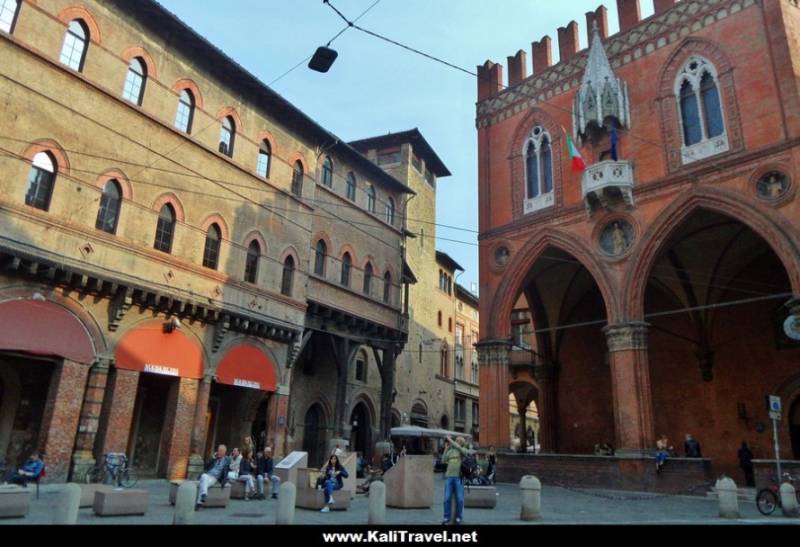
Santo Stefano district is one of Bologna’s six quartiere, the eastern side of Bologna old town downwards from Montagola Park, and includes the former Jewish Ghetto, university district, the twin towers, Quadrilateral area, the Archiginnasio of Bologna, right down to Piazza Santo Stefano and the Basilica of Domenico, and beyond to residential areas in the hills. However, the heart of the district radiates from the ancient church, the Basilica of Santo Stefano.
The National Picture Gallery of Bologna is housed in Palazzo Pepoli Campogrande, a lavish 17th century palace, a museum and part of Italy’s National Art Gallery, where you can appreciate frescoes, paintings and art collections in a series of exquisitely decorated halls. On Via Castiglione.
Bologna History Museum is just across the road in the Gothic style ‘Old Pepoli Palace’ Palazzo Pepoli Vecchio. The original owners were the powerful Pepoli family who became ‘Lords’ of the city in the 1300s. The museum covers 2,500 years of local culture and history from prehistory up to modern times. On Via Castiglione, take a left onto Via Pepoli to Santo Stefano Basilica.
Palazzo Salina is a Renaissance style palace on Piazza Santo Stefano which has belonged to the Bolognini family since the 16th century. The colonnaded façade with inlaid terracotta busts above the arches is particularly interesting. On Via San Stefano.
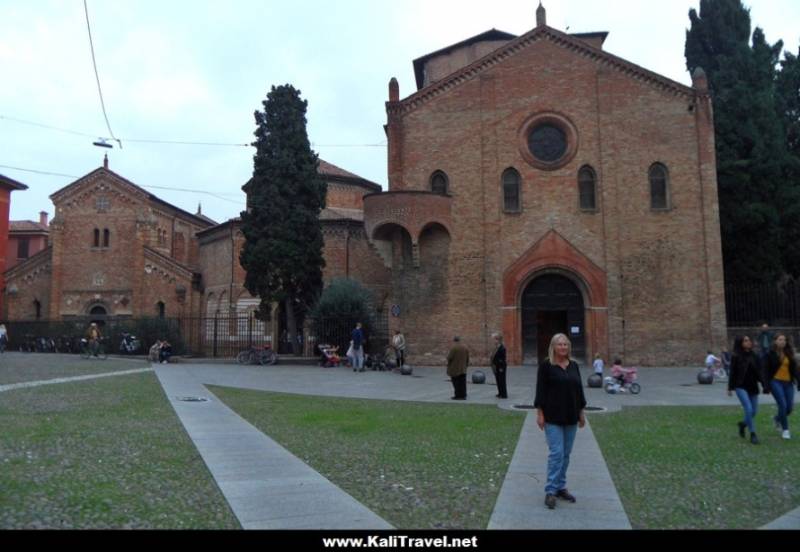
Santo Stefano Basilica is at the back of the same quaint plaza, and one of the most atmospheric places to see in Bologna… the ‘Seven Churches of Saint Stephen’ is unique, an extraordinary 7-in-1 holy place whose roots are lost in time. The church doesn’t look big from the outside, the main nave is almost plain, but go to a discreet doorway near the altar and a monk will show you through into another realm.
Walk around the ancient stone pulpit towards the arched inner courtyard which is surrounded by a series of extremely old chapels. Imagine wandering around the candlelit cloisters at twilight with the sound of soft chanting seeping from a sacred inner sanctum. Possibly built as early as the 4th century over a pagan temple, grand part of the actual structure dates to the 13th century.
Entrance is free, donations are welcome. On Piazza San Stefano.
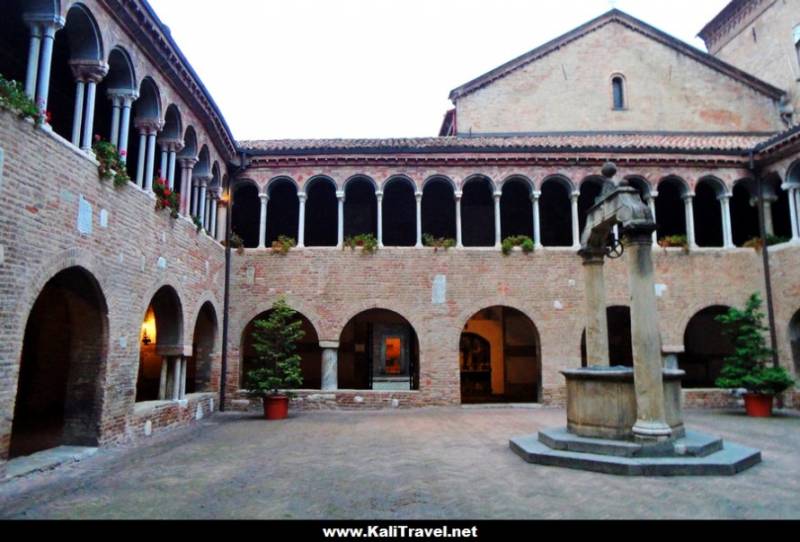
Stroll along Via Farini (westwards 5 minutes) then south along Via Garibaldi (3 min) to a cobbled plaza and San Domenico Basilica, a 13th century church with a remarkable rosette window over the arched entrance doorway. The remains of St Domenic lie under the main dome in a splendid shrine decorated with sculptures created by Michelangelo, whilst the surrounding chapels are similarly adorned with priceless works of art by Italy’s great masters.
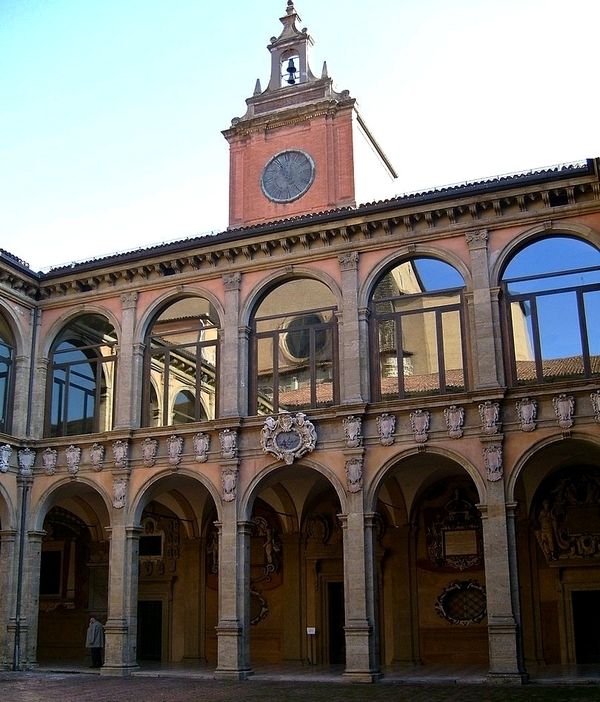
Photo by Luca Borghi
Return up the same road Via Farini (northwards 4 minutes) to see the Archiginnasio of Bologna or ‘studium’ as it was called– a science museum and library, where anatomy, physics, law, maths and philosophy were taught back in the 16th century when this was the seat of Bologna University! Commissioned by Pope Pius IV, the elaborately arched building with inner courtyards and the famous ‘anatomical theatre’ is definitely worth a visit.
Walk under the Pavaglione portico along Via dell’Archiginnasio which basically runs beside the Basilica di San Petronio and into Piazza Maggiore.
* This ‘detour’ is just over one-and-a-half kilometres in all, a 20 minute walk – but obviously takes longer to visit the actual sites.
Piazza Maggiore
Piazza Maggiore is Bologna’s grand central plaza, a historical meeting place, and one of the oldest public squares in Italy. Originally the town marketplace as far back as the 13th century, the huge patio is flanked by medieval buildings of significant interest on all sides.
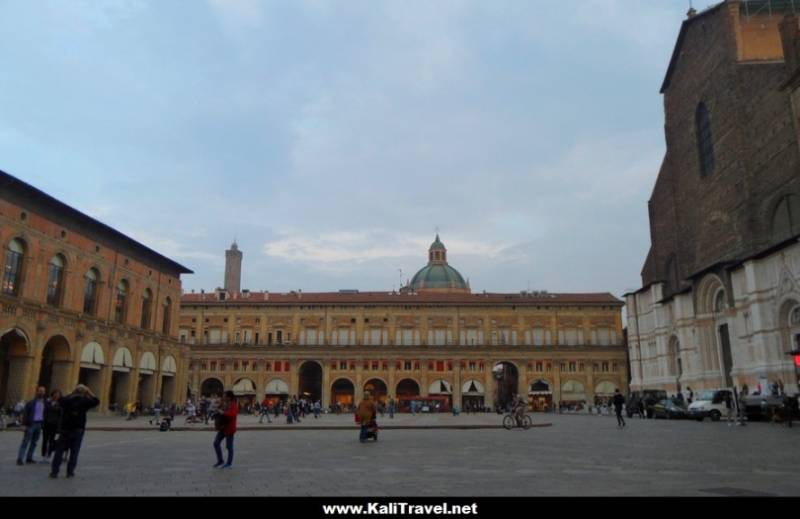
Palazzo dei Banchi (east)
Palazzo dei Banchi is the 16th century renaissance style building with the green dome, once a banking centre for the merchant bankers who originally set up shop under the arcades which covered this side of the Piazza in the 1400s. Two large archways lead to the Quadrilato, into Via degli Orefici, Via Pescherie Vecchie and Via Clavature, the traditional little trading streets filled with typical eateries and food shops, grocers, fishmongers and butchers, which have been here for generations.
San Petronio Basilica (southeast)
Known as the Duomo of Bologna because of its grandeur (10th largest church in the world), Basilica San Petronio is not the city Cathedral even though the remains of patron saint Petronius are entombed here. Work on the colossal church started in the 14th century and was never really finished. See the unusual marble and brick façade, visit the vaulted nave and 22 holy chapels, ponder on the Meridian Astrology Line, and then take the lift up to the roof terrace for panoramic views over the old town.
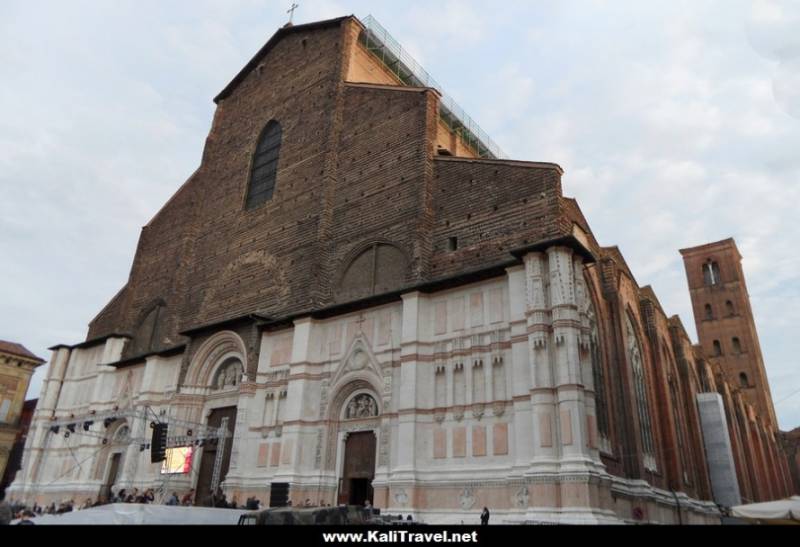
Palazzo d’Accursio (west)
Bologna Town Hall is located in the 14th century Accursio Palace – named after the Roman jurist who once lived here, over time adjacent premises were annexed and the converted Palazzo became the magistrate court (1336) and then the seat of the local council. ‘Torre Accursi’ clock tower was added in the 15th century. Step inside to see the frescoed halls, art museum and library.
Bologna public library, Sala Borsa is in the same building with the entrance on Piazza Nettune (Bologna war memorial is on this façade).
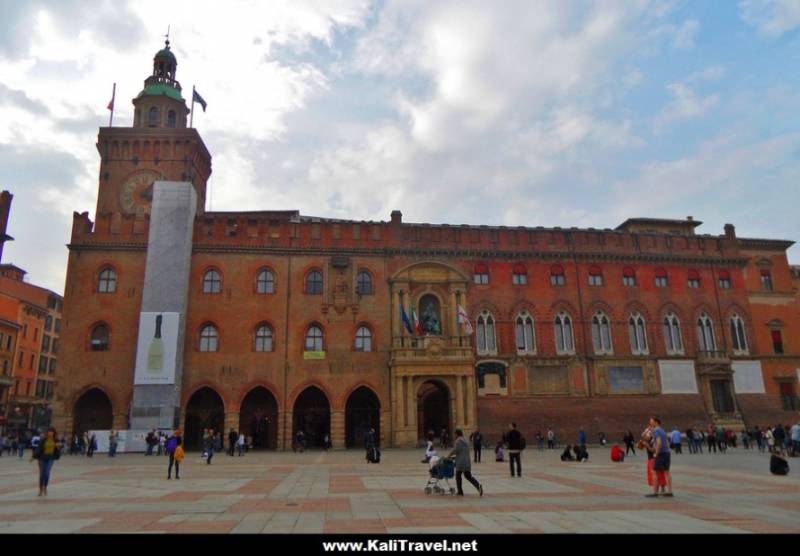
Palazzo del Podestà (north)
Palazzo del Podestà is the oldest building in Maggiore square and directly opposite the basilica. Built in the early 1200s for the chief magistrate, in true Renaissance design with the typical porticoes and a whispering galley, this is Bologna’s former court and police station. The palace was curiously turned into a theatre during the 16th to 18th centuries.
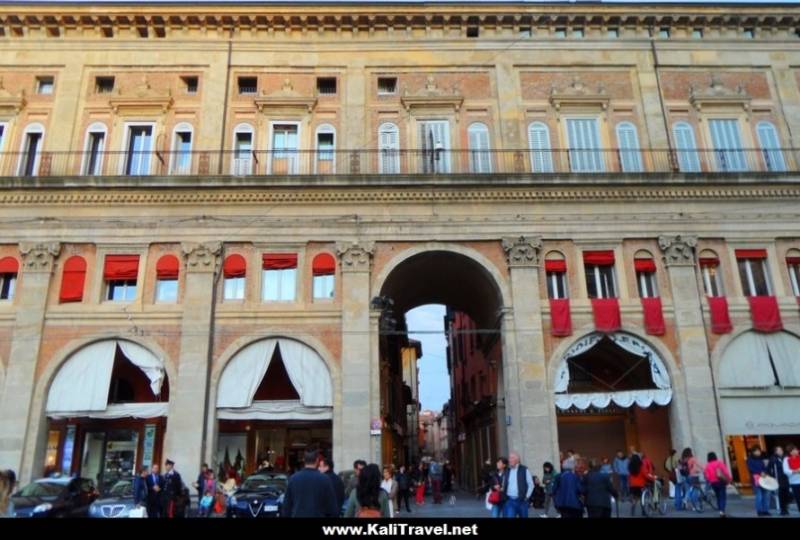
Palazzo Re Enzo (north)
Palazzo Re Enzo was built as an extension to Podestà Palace a few years later in 1245, an impressive Palazzo facing Maggiore and Neptune squares. This Palazzo has an intriguing history involving Enzio, the ambitious illegitimate son of King Frederick II, who was imprisoned here for life. Naturally, the building has been reformed through the ages so the Gothic style you see today only dates to the early 20th century and nowadays hosts top events.
Bologna Tourist Information ‘Welcome Bologna’ has an office on the ground floor.
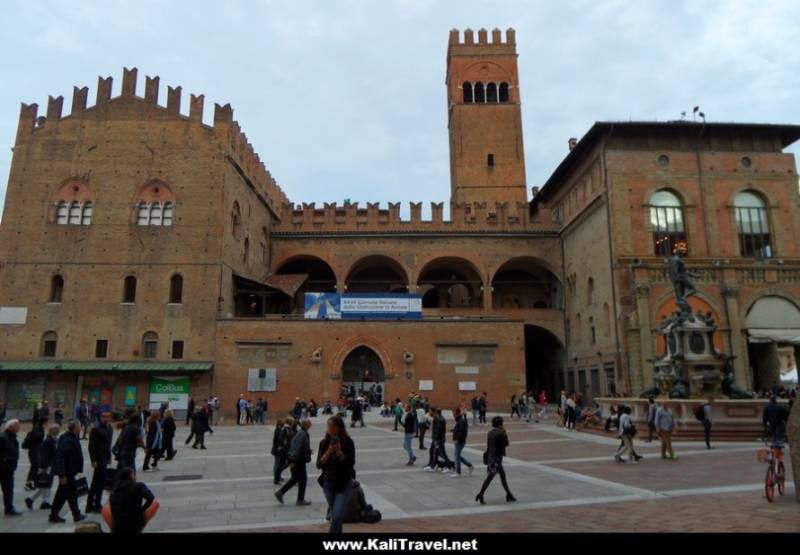
Piazza del Nettuno
The northwest corner of Piazza Maggiore leads to Piazza del Nettuno and the legendary fountain. Another of Bologna’s iconic sights, the Fountain of Neptune, designed in the 16th century features mermaid, cherub and Nereid waterspouts beneath the bronze statue of a naked God Neptune holding his great trident.
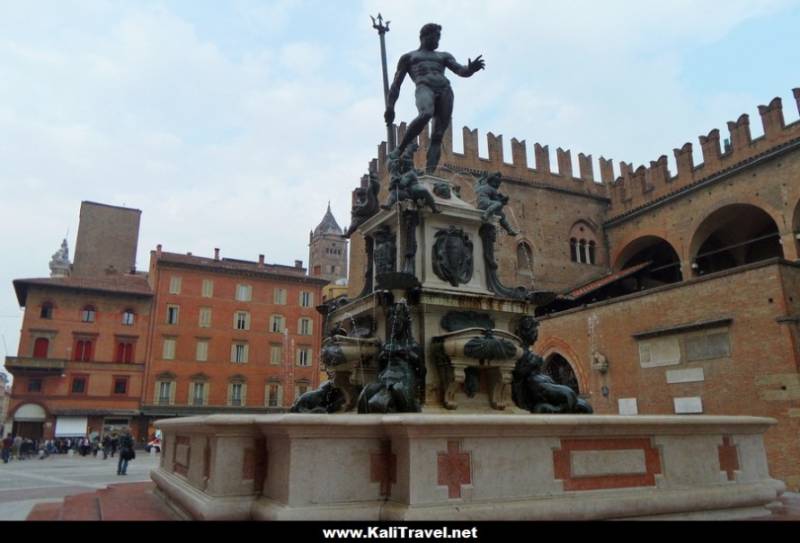
Cathedral of San Pietro
Saint Peter’s Cathedral is only 2 minutes away northwards on Via dell’Indipendenza (on the walk back towards the train station area). The original 11th century cathedral was gutted by fire and subsequently rebuilt, what you see today is mainly 17th century architecture. Distinguishing features include the bell tower, elaborate Baroque frescoes, and the Cathedral Treasury.
Day Two in Bologna (Sunday)
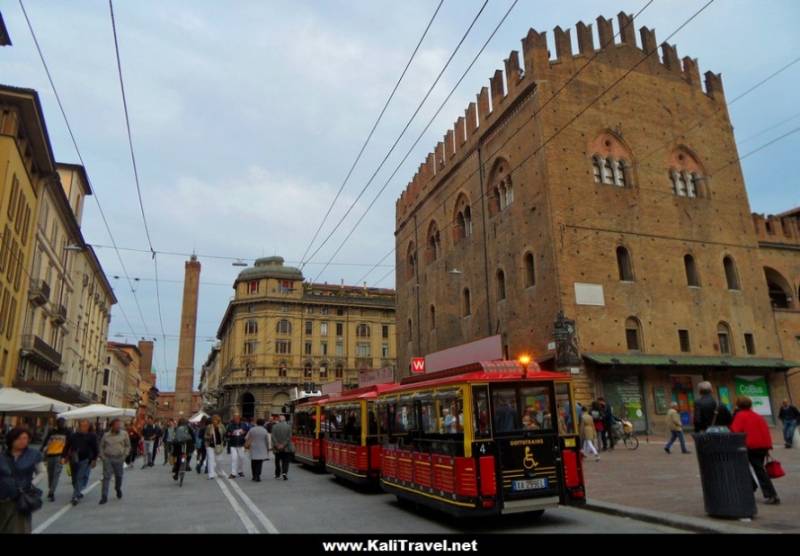
In the morning visit the churches and museums you didn’t get time to see inside the previous day (check opening times). Or browse the Sunday flea market in Piazza San Stefano. Then head along to Piazza Maggiore for some fun – food tasting, outdoor exhibitions, live shows or some kind of entertainment will always be on.
Walk up to San Luca Sanctuary
Madonna di San Luca Sanctuary watches over Bologna from the top of Mount Guardia and is the perfect place to take in the cityscape views on a sunny afternoon. The walk to ‘Basilica of the Virgin Mary’ begins at Porta Saragozza, the ‘Holy Gate of Pilgrims’, under the longest covered portico in the world.
The uphill stretch starts from Meloncello Arch and continues along the footpath for a couple of kilometres. The last bit is more strenuous up several flights of steps. If you don’t fancy the hour walk, ride the San Luca Express ‘tourist train’ up the hill from Piazza Maggiore, or drive along the narrow road.
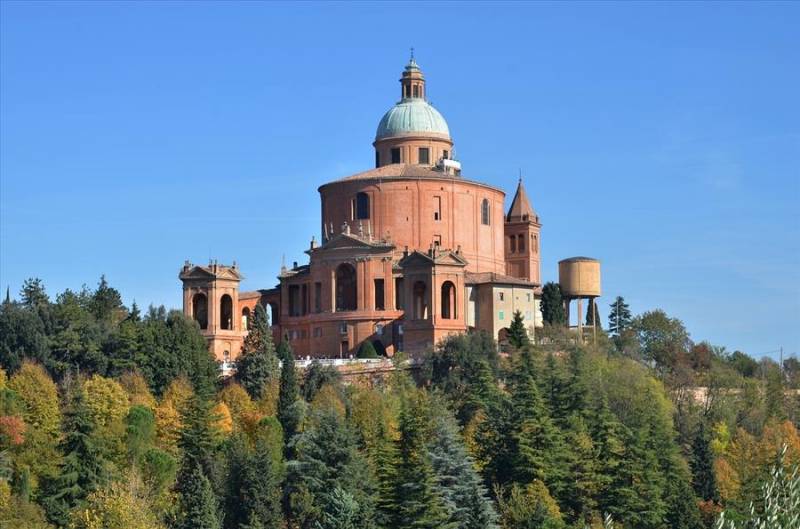
Saragozza portal dates to the 13th century when it guarded a drawbridge across the moat which once encircled Bologna’s old city walls. Arco di Meloncello is the great Baroque arch used as an overpass. Three-point-eight kilometres of monumental portico lines the route – dating to the 17th century, this succession of 666 roofed arches sheltered pilgrims paying homage to the ‘Virgin Mary’.
An icon of the Madonna (apparently painted by Saint Luke himself), is ceremoniously carried from St Peter’s Cathedral along the walkway in a yearly procession that has taken place for centuries. Also known as the Sanctuary of Saint Luke, the Basilica was built in 1723 over a smaller chapel that had stood here on Monte della Guardia for a thousand years or so.
*Leave Piazza Maggiore beside the basilica, turn right to Via Saragozza.
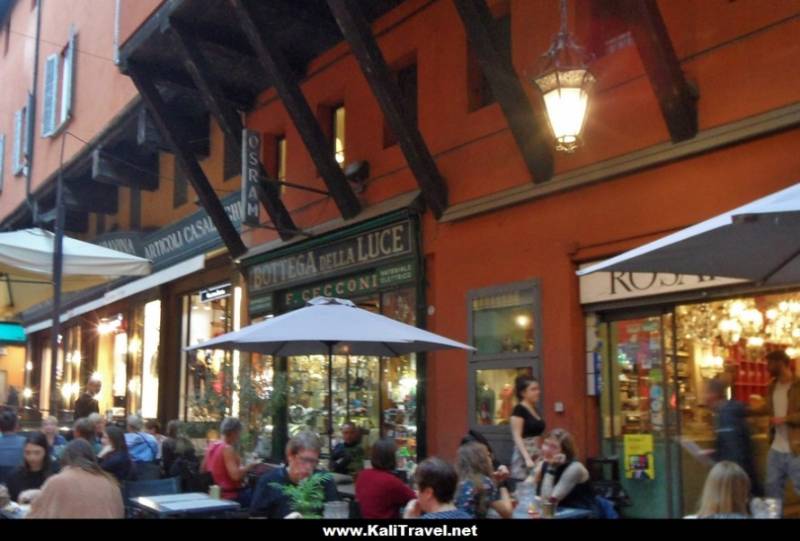
Planning a Trip to Italy?
Related Posts: Popular destinations to combine with Bologna
Whether you’re here at the weekend, or just love travelling and need to budget the frills, our ‘1 Day in Florence’ guide gives some useful suggestions for a day out or overnight stay in Italy’s favourite city.
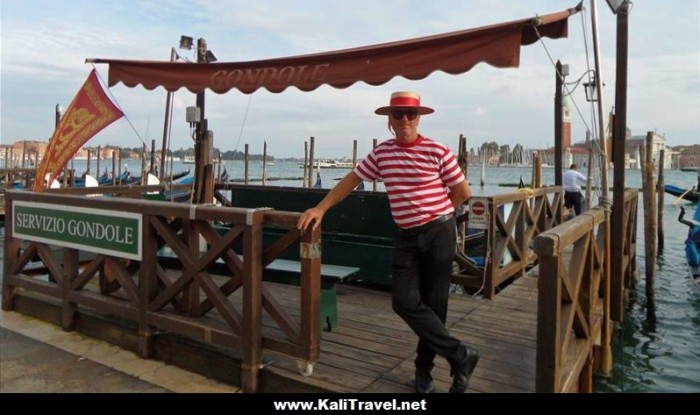
Venice is one of the best places to visit in Italy, a unique and thrilling experience! Stay in the heart of old Venice city, discover the iconic sites and then wander along the maze of canals away from the tourist scene.
Venice Lagoon Islands: Torcello, Murano and Burano
How to Visit Venice Lagoon, Italy. Doesn’t the ‘Islands of the Venetian Lagoon’ sound romantic? Murano, Burano and Torcello are beautiful little islands a short distance off the coast of the world’s most famous water city – Venice!
This post explains why Pisa is worth visiting, with all the info you need to know about the top sites and how simple it is to get here. Fit Pisa into your travel plans for a few hours or a longer stay!
If this is your first visit to Italy’s capital city, trying to see the Vatican and Rome in 1 day sounds complicated but with a little planning it’s easy to do.
A Day In Siena Walking Itinerary
1 day in Siena, Italy: How to see Siena in a day with our easy self-guided walking itinerary. Discover the medieval sites of Tuscany’s famous hilltop city.
The Medieval Walled City of Lucca
Our comprehensive guide explains everything you need to know about Lucca, Italy. Follow our 1 day itinerary or gather ideas for a holiday in Tuscany’s beautiful walled city.
A 3 day Cinque Terre itinerary explaining how to see the 5 villages of Monterosso, Manarola, Corniglia, Vernazza & Riomaggiore, the beaches, walks and cuisine.
Best Places For Food in Emilia Romagna
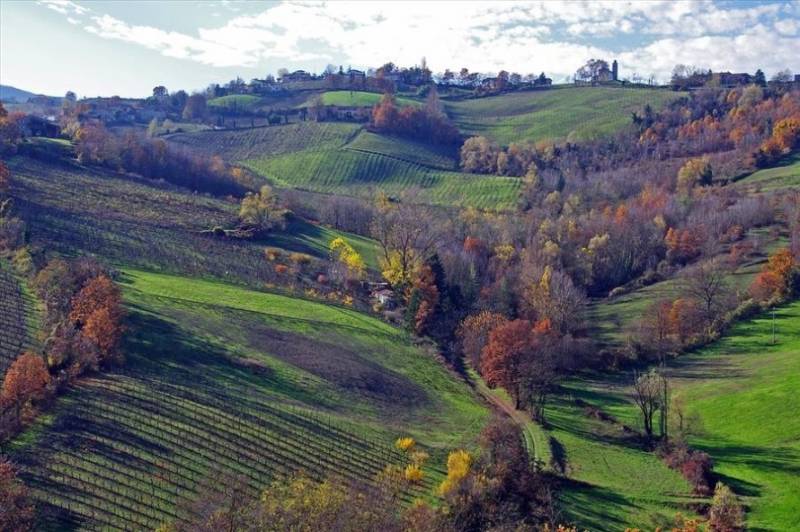
From Rimini on the Adriatic coast to rural Parma and Modena in vineyard country, and the capital city of Bologna, Emilia Romagna is famous for its rich cuisine and one of the best places for food in Italy.
Discover the World with ![]() the blog with a focus on independent travel.
the blog with a focus on independent travel.




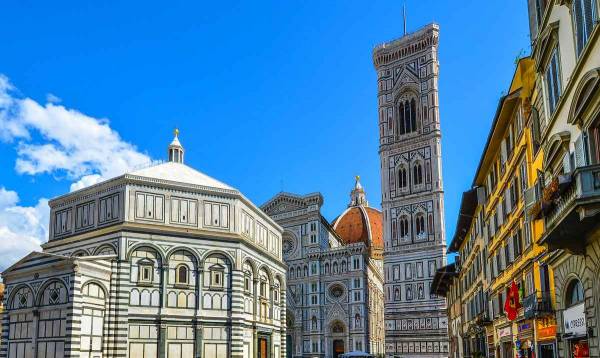
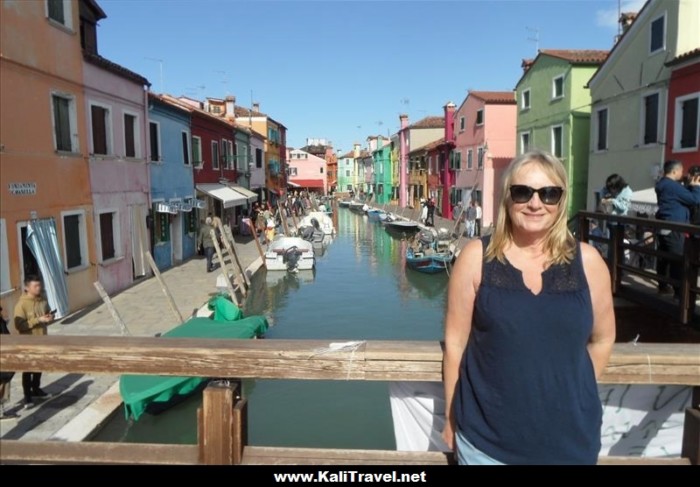
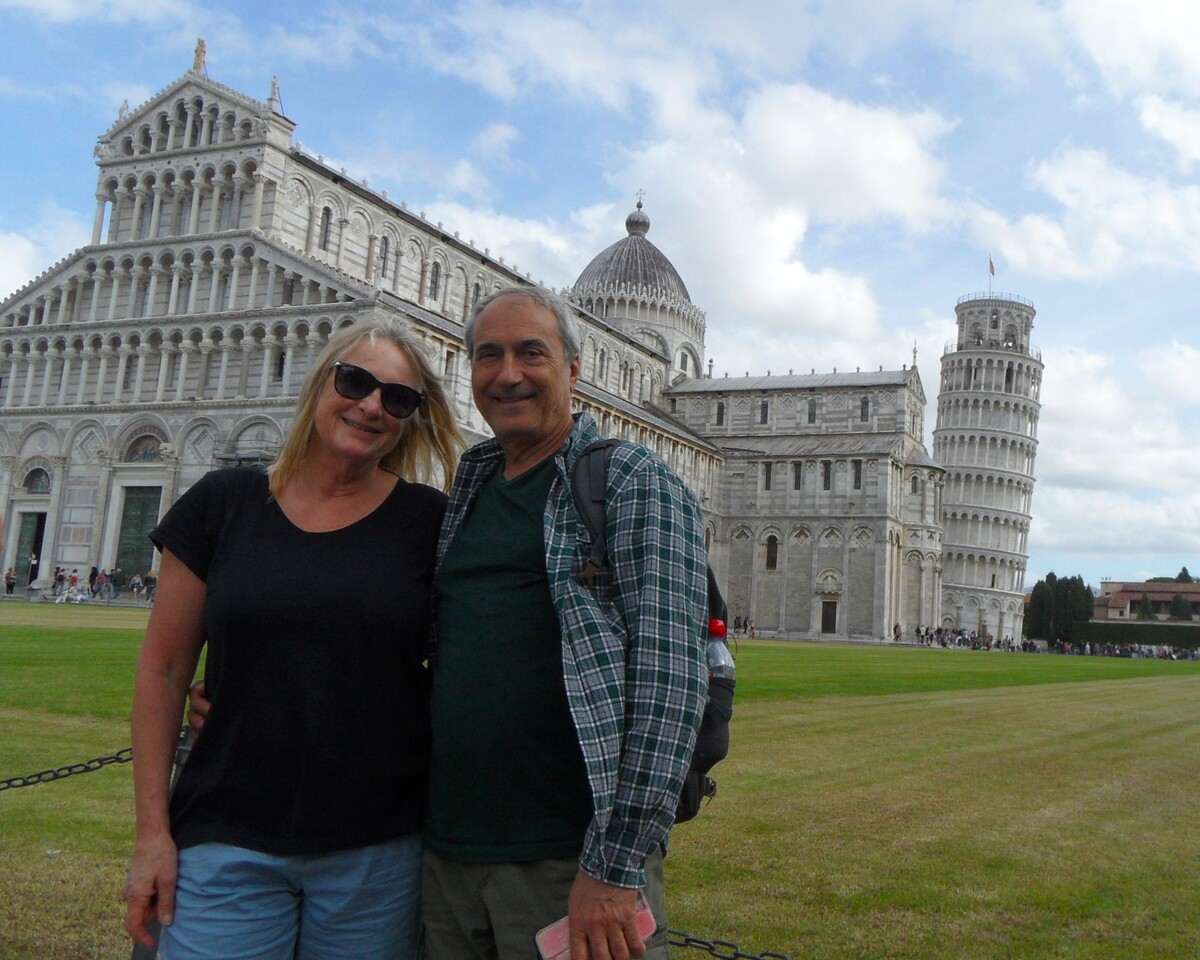
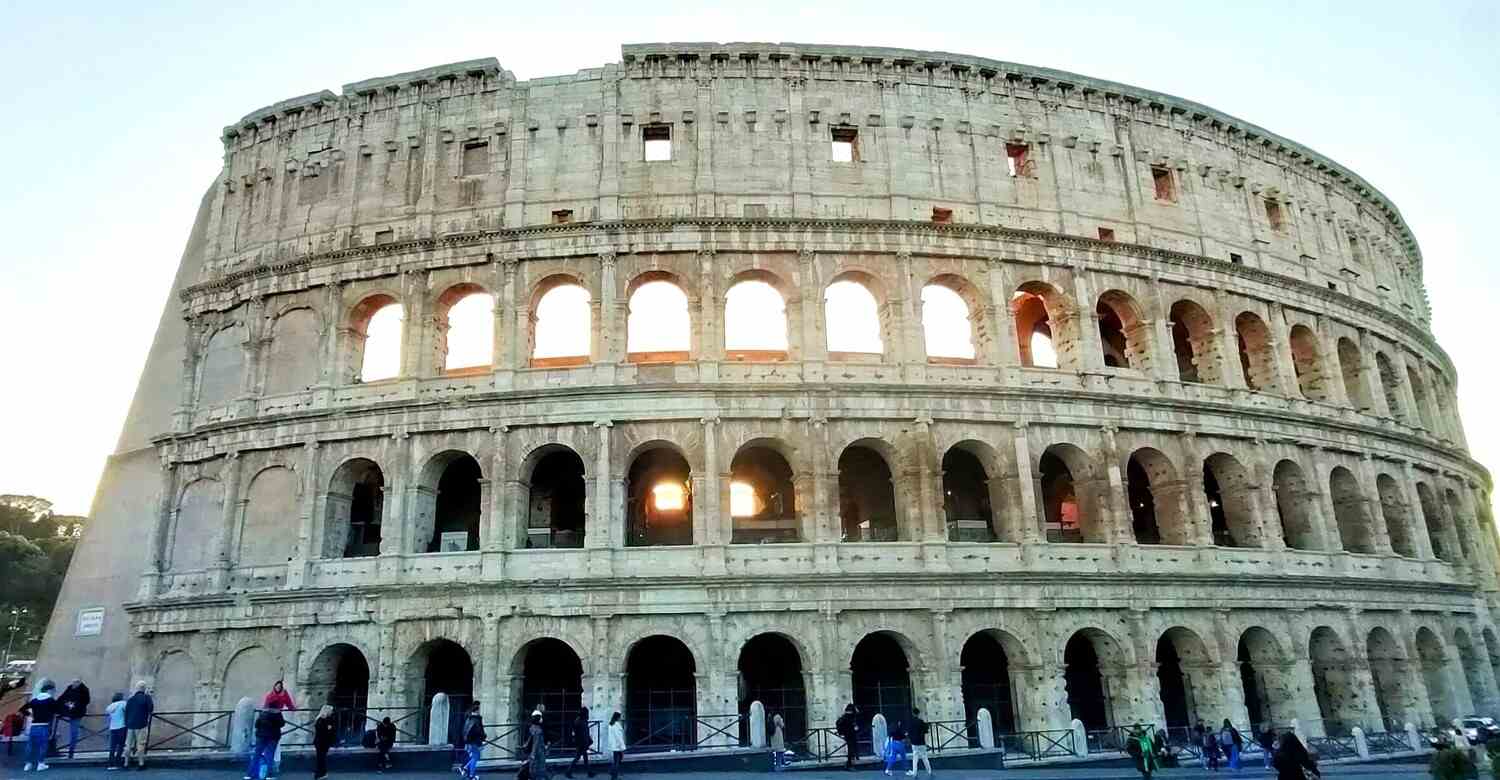
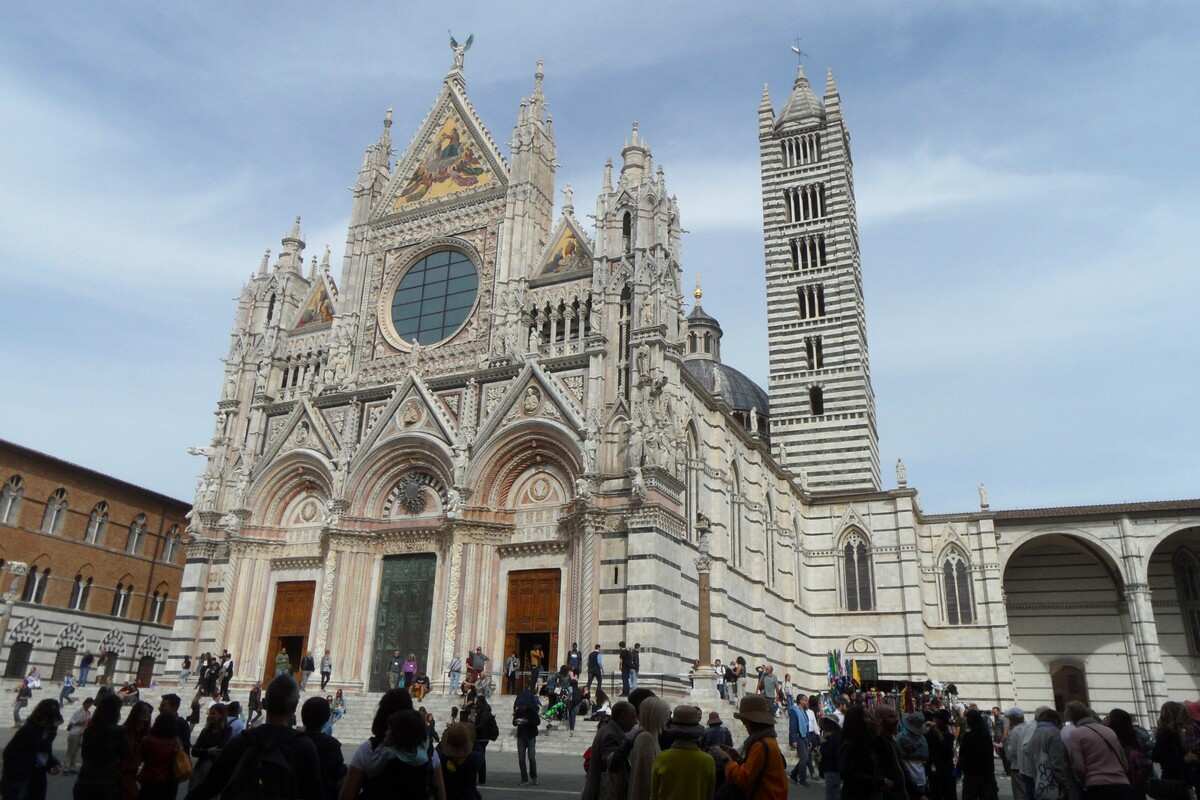
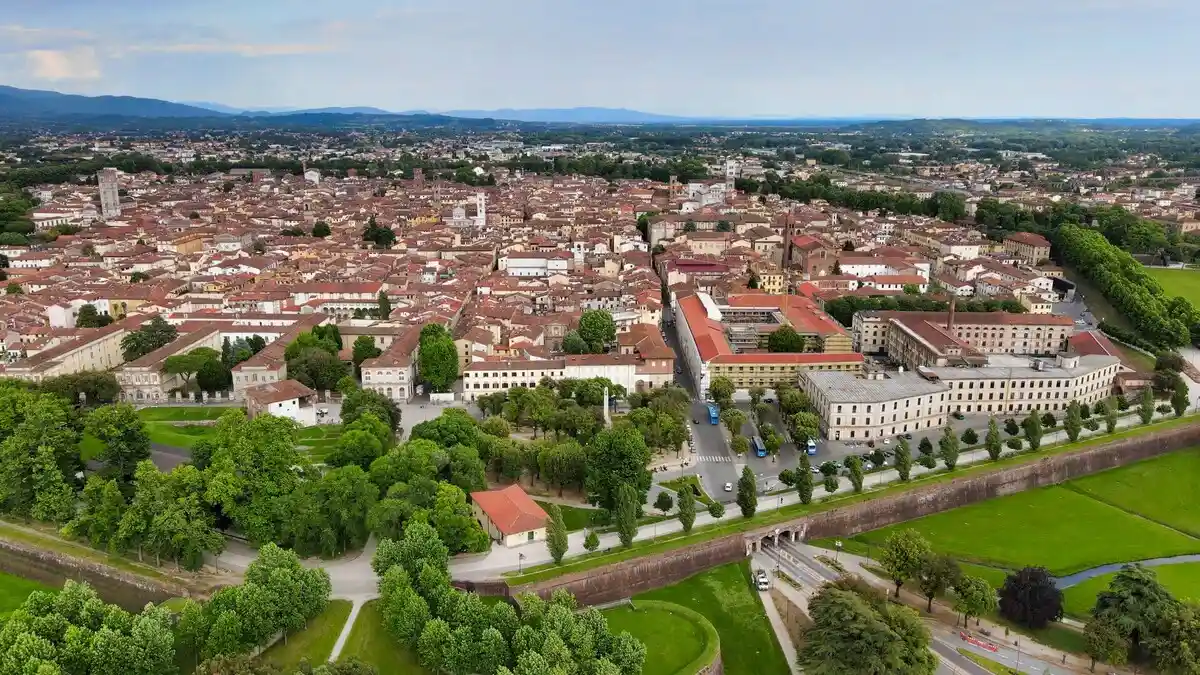
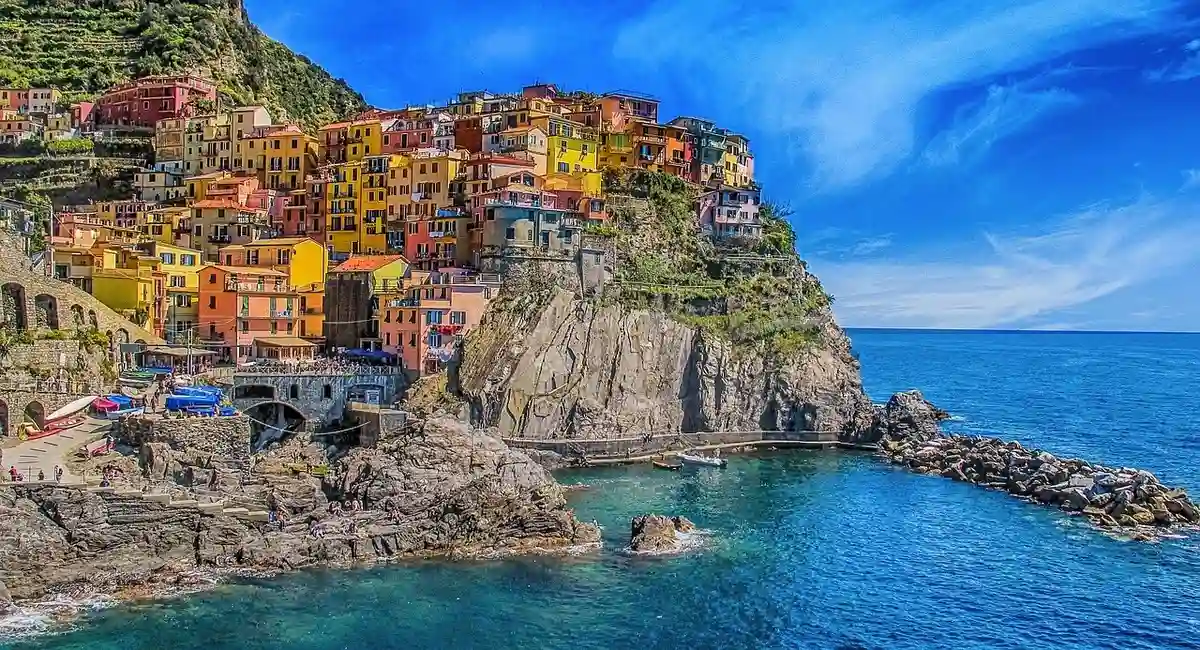
What a fantastic post!!! Thoroughly enjoyed following your adventures in Bologna! Can’t wait to experience the history, art, and calorific higgledy-piggledy food journeys! Beautifully written, wish we could see the city with our own eyes, especially Santo Stefano Basilica…
This is a terrific blog! Great photos, tons of useful information…bravo to you!
Such a wonderful, in-depth post on a city my husband has always wanted to see! Definitely have to carve out a few days next trip to Italy & experience all that Bologna offers, especially delicious food & drinks ! I did not know:” Bologna is built over a system of ancient waterways?” – can’t wait to see these historic & beautiful waterways too!
Bologna looks so beautiful! I’ve been to most parts of Italy but not to this area. Would love to visit especially as it has such a huge historic area. I could wander those streets and squares for hours!